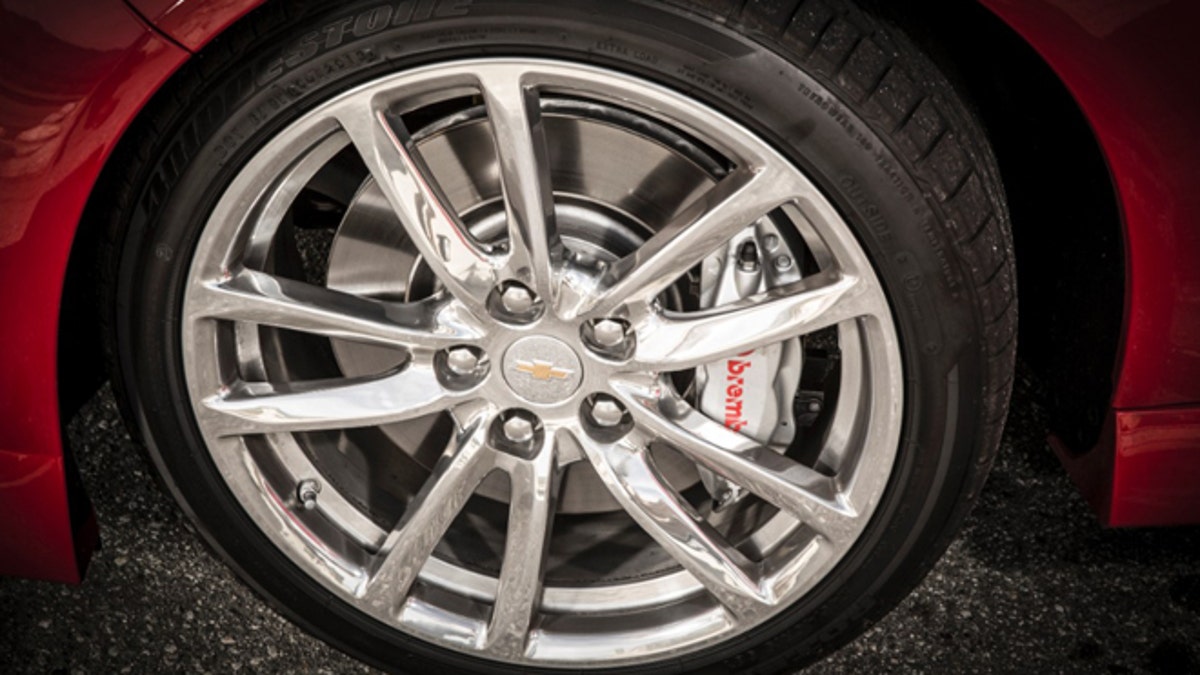
2014 Chevrolet SS (Chevrolet)
Anything made with rubber can become more rigid as temperatures get very low, as evidenced by some ultra-high-performance summer tires being used by General Motors and other manufacturers on some vehicles. These tires not only lose grip in cold weather, but they risk cracking, compromising longevity.
This is a significant concern for buyers in northern climes, with GM notably advising not to drive such vehicles during winter chills at the risk of developing damaging cracks. It is likewise important to owners looking forward to spring drives in their performance cars to inspect the tires thoroughly.
GM bulletin #13-03-10-001A: "Information on Tire Cold Weather Cracking" – (Jan 30, 2014) advises “avoid driving, moving, or test-driving vehicles equipped with high-performance summer-only tires below 20º F as operating at these temperatures can cause damage to the tires.” The car models affected include the 2012-2014 Buick Regal GS, 2014 Cadillac CTS Vsport, 2012-2014 Chevrolet Camaro ZL1 and Z/28, 2014-2014 Chevrolet Camaro SS 1LE, and the 2014 Chevrolet Corvette Stingray and Stingray Z51, and SS sedan.
In GM’s quest to deliver the ultimate handling in these cars, they built performance tires with essentially a racing compound to deliver the goods. These tires are great for driving in temperate areas and are ideally suited for track use, but the practicality of the tires stops there.
More From Consumer Reports
Reaching out to a GM tire supplier, Pirelli, a spokesman explained that the performance tread compound becomes so stiff on such tires that it can lead to cracking when deformed in cold weather. In measuring the hardness of numerous brands of summer tires at 0º F, we have found the tread becomes almost inflexible and the tires lose their bounce when dropped. The cracking is characterized as cosmetic, but in our experience any cracking shouldn’t be taken lightly as it can evolve over time. If there is crack, you should replace the tire. (GM’s service bulletin also recommends discarding a tire with cracking.)
Here is what you need to do if you own or are considering purchasing one of the GM cars mentioned in the bulletin or any car that comes with summer tires.
- When looking at a new car with performance summer tires at a dealer’s lot, check the tires on the car for cracking in the tread area. The car may have only a few miles on the odometer, but if it was parked in the cold and moved around during transport or by the dealer, the tires could have cracked. This is the time to have the dealer change the effected tires, because once you make the deal and drive off, it’s your headache.
- If you own a car with summer tires, refrain from using it at all in cold temperatures as the tires may crack. Leave it parked. Beyond cracking concerns, summer tires have diminished grip below 40º F on dry and wet roads and virtually little to no grip on snow and ice.
- If you bought your dream car with summer tires on it and live in an area that does have winter, then consider using performance all-season tires or dedicated winter tires. These will provide better cold-weather grip and preserve the pricey summer times for the other seasons. Through our testing, we have found a number of ultra-high-performance all-season tires that provide handling and dry and wet grip on par to many summer tires we have tested. (See our full tire ratings.)
Learn more about tires in our tire buying guide.
—Gene Petersen
Copyright © 2005-2014 Consumers Union of U.S., Inc. No reproduction, in whole or in part, without written permission. Consumer Reports has no relationship with any advertisers on this site.